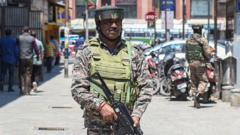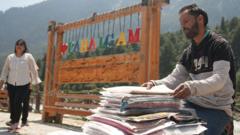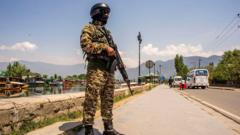The region faces a profound crisis as violent acts exacerbate feelings of alienation among its residents.
Kashmir's Beauty Shrouded by Despair: A Response to Recent Violence

Kashmir's Beauty Shrouded by Despair: A Response to Recent Violence
A horrific attack reveals deep-rooted strife in Kashmir, overshadowing its beauty and tourist appeal.
Kashmir is a land of contradictions. A picturesque paradise long contested between India and Pakistan, it is also a hotspot for violence and military tension. Recently, this duality was tragically underscored by a brutal terrorist attack that claimed the lives of 26 innocent civilians, highlighting the ongoing turmoil in this geopolitically sensitive area. Since 2019, under Prime Minister Narendra Modi's administration, the Indian-held territory has been subjected to increased military presence, with promises of improved security and economic growth; yet, the lived experience of locals tells a vastly different narrative.
Despite the influx of millions of tourists every year drawn to its stunning landscapes, the residents of Kashmir encounter systematic alienation. The aftermath of the recent atrocity has ignited further anger and fear among the Muslim-majority population, many of whom feel they live in a constant state of oppression. In response to the attack, Indian authorities have initiated broad and aggressive measures, including mass detentions of local people and demolition of homes allegedly linked to the attackers. These actions, perceived by many as collective punishment, deepen the divide between the government and the local populace.
This cycle of violence and retribution perpetuates a culture of mistrust. While the area’s beauty remains undeniable, marked by breathtaking views and a rich cultural heritage, the terror of violence casts a long shadow over its allure. As journalists, we must strive to convey the full story of Kashmir—its hardships and aspirations—beyond the breathtaking scenery, recognizing the resilience of a people enduring profound sorrow amidst their homeland's splendor.
Despite the influx of millions of tourists every year drawn to its stunning landscapes, the residents of Kashmir encounter systematic alienation. The aftermath of the recent atrocity has ignited further anger and fear among the Muslim-majority population, many of whom feel they live in a constant state of oppression. In response to the attack, Indian authorities have initiated broad and aggressive measures, including mass detentions of local people and demolition of homes allegedly linked to the attackers. These actions, perceived by many as collective punishment, deepen the divide between the government and the local populace.
This cycle of violence and retribution perpetuates a culture of mistrust. While the area’s beauty remains undeniable, marked by breathtaking views and a rich cultural heritage, the terror of violence casts a long shadow over its allure. As journalists, we must strive to convey the full story of Kashmir—its hardships and aspirations—beyond the breathtaking scenery, recognizing the resilience of a people enduring profound sorrow amidst their homeland's splendor.



















